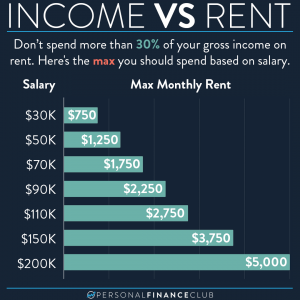I won’t bury the lead. If you invest $200/month for 40 years, this is how much you’ll end up with.
-
- In an Indexed Universal Life (IUL) insurance policy: $320,701
-
- In an index fund: $1,797,311
An IUL policy is likely to erode 82% of your wealth compared to investing directly in an index fund that tracks the same index. How do I know this? Because I bought one, read all 91 pages of the policy, and did the math.
I have been seeing a rash of insurance salesmen on social media representing their insurance products as investments. They ignore the death benefit (the insurance part of an IUL insurance policy) and instead talk about the amazing compound growth, tax benefits, unlimited banking, retirement income, etc.
After seeing these social media posts, I clicked on one of their links in bio and set up a meeting. I was on two different zoom sales calls that lasted about 90 minutes in total. I recorded them in their entirety. They pitched me the product, I gave them all my info, and I bought it. For what it’s worth, the policy I bought was through World Financial Group (WFG) which is an insurance MLM and they sold me an Transamerica policy. The policy I purchased is typical of every other one I have ever seen.
Below I’ll detail the top ten lies the told by these IUL insurance salesmen, and the truth behind the math.
Lie #1: They Ignore The Existence of Dividends
Pretty much every IUL pitch you’ll see eventually will have a chart like the one below. This came directly from the policy I purchased.
| Year | S&P 500 Index | IUL 0.75% Floor and 13.75% cap |
| 2002 | -23.37% | 0.75% |
| 2003 | 26.38% | 13.75% |
| 2004 | 8.99% | 8.99% |
| 2005 | 4.69% | 4.69% |
| 2006 | 11.65% | 11.65% |
| 2007 | 3.65% | 3.65% |
| 2008 | -38.49% | 0.75% |
| 2009 | 23.45% | 13.75% |
| 2010 | 12.78% | 12.78% |
| 2011 | 1.54% | 1.54% |
| 2012 | 11.68% | 11.68% |
| 2013 | 29.60% | 13.75% |
| 2014 | 11.39% | 11.39% |
| 2015 | -0.73% | 0.75% |
| 2016 | 10.46% | 10.46% |
| 2017 | 19.40% | 13.75% |
| 2018 | -7.01% | 0.75% |
| 2019 | 28.88% | 13.75% |
| 2020 | 16.26% | 13.75% |
| 2021 | 26.89% | 13.75% |
| 20 Year Average | 7.38% | 8.67% |
Upon first glance, this makes the IUL look pretty good. No downside risk, higher overall return. As far as investing goes, those are both good things. But with all good cons, there’s a morsel of truth hidden in the big lie. IULs always compare their “index interest” to the change in share price of the index, but they ignore dividends. i.e. If you buy an index fund you don’t get the 7.38% return shown on the left. You get that return PLUS all of the dividends paid to you in cash (which can then be reinvested to amplify your total growth). Here’s the same chart with a third column showing the actual total return of an S&P 500 investment:
| Year | S&P 500 Index Change | IUL 0.75% Floor and 13.75% cap | S&P 500 Total Return with Dividends reinvested |
| 2002 | -23.37% | 0.75% | -22.10% |
| 2003 | 26.38% | 13.75% | 28.68% |
| 2004 | 8.99% | 8.99% | 10.88% |
| 2005 | 4.69% | 4.69% | 4.91% |
| 2006 | 11.65% | 11.65% | 15.79% |
| 2007 | 3.65% | 3.65% | 5.49% |
| 2008 | -38.49% | 0.75% | -37.00% |
| 2009 | 23.45% | 13.75% | 26.46% |
| 2010 | 12.78% | 12.78% | 15.06% |
| 2011 | 1.54% | 1.54% | 2.11% |
| 2012 | 11.68% | 11.68% | 16.00% |
| 2013 | 29.60% | 13.75% | 32.39% |
| 2014 | 11.39% | 11.39% | 13.69% |
| 2015 | -0.73% | 0.75% | 1.38% |
| 2016 | 10.46% | 10.46% | 11.96% |
| 2017 | 19.40% | 13.75% | 21.83% |
| 2018 | -7.01% | 0.75% | -4.38% |
| 2019 | 28.88% | 13.75% | 31.49% |
| 2020 | 16.26% | 13.75% | 18.40% |
| 2021 | 26.89% | 13.75% | 28.71% |
| 20 Year Average | 7.38% | 8.67% | 9.52% |
So an index fund does indeed have a higher return even in this example. But these numbers are not what the IUL actually returns. We haven’t even gotten started yet.
Lie #2: Cherry Picked Timeframe
The time frame of the above happens to start with the dotcom crash, then go shortly into the financial crisis. An early crash is an ideal timeframe to cherry pick this kind of product. Below is the actual chart shown to me during the sales pitch in 2022. It covers a 15 year time frame from over 10 years ago that just happens to be conveniently centered on the “lost decade” that contained two of the biggest market crashes in the last 100 years.
If we revisit the 20 year timeframe shown in my policy and extend it look back 40 years, this is what you get:
-
- 1982-2021 S&P 500 IUL 0.75% floor and 13.75% cap: 8.80%
-
- 1982-2021 S&P 500 Total return: 12.35%
Over this time period, the IUL underperforms by over 3.5% annually, which is devastating to any investment. But unfortunately for anyone who owns an IUL policy, the cash value will never actually grow at even these rates or what the green line above shows. That’s because these return numbers don’t include the impact of the fees.
Lie #3: The Fees. The Fees. My God, the Fees
At no point during the 90 minute sales pitch were the fees of this policy even mentioned. I’ve never seen a tiktok or instagram post from an IUL salesman which even comes close to an explanation of the fees. But I read every page of the policy, so I’ll break down for you the fees when you pay into an IUL product:
-
- Premium Expense Charge: 6%. This is immediately taken out of the premium you pay.
-
- Monthly Policy Fee: $12. Just like it sounds, you pay this month per month no matter what.
-
- Per Unit Charge: $0.59/Month. A “unit” is usually $1,000 in death benefit coverage. The policy I bought had a $100,000 death benefit. That means I had 100 units and was getting charged another $59/month just to maintain this policy. And this is just a fee. It doesn’t even cover the actual cost of insurance explained below in lie #4.
-
- Surrender Charge: Starts at $24.91/Unit and starts dropping at year 11 until it’s gone after year 16. This means that if you want your money back before 16 years, you have to pay yet another fee. This generally means that you can’t get ANYTHING back for the first several years (four in my case) and if you stop paying monthly or decide to cancel your policy you lose everything.
-
- Index Account Charge: 0.06%/month. AFTER all of the fees above plus cost of insurance are taken, then THIS fee is assessed to the remaining cash value. 0.06%/month doesn’t sound bad, but that’s about 0.72% per year.
If you were to buy an index fund through a reputable brokerage like Vanguard, Fidelity or Schwab, all of these fees would be ZERO except for the “expense ratio” of the index fund which works similarly to the “Index Account Charge” above. But instead of 0.72% per year, that fee in the Vanguard 500 ETF for example would be 0.03% per year, 24X lower.
But wait, there’s more. We haven’t even paid for the insurance part of this insurance policy yet.
Lie #4: The cost of insurance
When insurance salesmen are pushing these IUL products, they rarely mention the actual death benefit which is supposed to be the point of life insurance. (In fact, by law there has to be a significant death benefit at your cost for them to even sell these as life insurance). The death benefit is real. If you were to meet your unfortunate early demise, it would pay out. But the marketing of these policies as superior investments fails to include the erosion of investment value due to the ever increasing cost of insurance. This monthly cost never goes away, even if you don’t have a need for life insurance (for example when your dependents are self-sufficient or your investments have grown to a level where additional insurance is unnecessary).
So how much does the insurance cost? In my policy it was several pages of numbers based on gender, age, and smoking status. But here’s a few examples from my policy with a $100,000 death benefit:
| Age | Male non-smoker | Female non-smoker |
| 20 | $7.08 | $2.67 |
| 30 | $4.50 | $3.42 |
| 40 | $12.17 | $8.58 |
| 50 | $19.41 | $12.08 |
| 60 | $41.41 | $30.83 |
| 70 | $116.67 | $78.91 |
In addition to all the fees above, your “cash value” will also have these amounts taken out each month to cover the cost of insurance. Which leads us to the big lie:
Lie #5: The Big Lie: The cash value in the IUL policy will outperform an investment in an index fund
Let’s combine the above issues and figure out where the money is going. For the policy I bought, the monthly premium was flexible but initially set at $200. Now that we know the above fees, let’s look at where that $200 went:
-
- $12: Premium expense charge
-
- $12: Monthly policy fee
-
- $59: Per unit charge
-
- $4.50: Cost of insurance (Assuming 30 year old male, non-smoker)
-
- Total fees: $87.50
Of that $200 you put into this policy, $87.50 gets immediately eaten up by fees. That’s an instant -44% return. The remaining $112.50 goes into the cash value, which will underperform the market as described in under lies #1 and #2 above. Of course, you can’t actually get that money back due to the surrender fee for several years.
Insurance salespeople love to talk about how the fees decrease over time. Let’s look at making a $200 premium payment in the 40th year of this policy:
-
- $12: Premium expense charge
-
- $12: Monthly policy fee
-
- $59: Per unit charge
-
- $104: Cost of insurance (Assuming 69 year old male, non-smoker)
-
- $192: Index account charge (This is the 0.06% monthly fee on the cash value)
-
- Total fees: $379
How is it possible they’re charging $379 of fees on a $200 payment? Well, it’s now digging into the cash value that accumulated over the previous years.
What’s the net result of these crippling fees and below market returns? Here’s a side by side look at this IUL policy vs investing in an index fund, run over actual historical market returns from 1982-2021:
| Age | Year | S&P 500 Total Return / Year | IUL 0.75% Floor and 13.75% cap | IUL Fees | IUL Cash Out Value | Index fund fees | Invested in an index fund |
| 30 | 1982 | 21.55% | 13.75% | -$1,050 | $0 | -$1 | $2,916 |
| 31 | 1983 | 22.56% | 13.75% | -$1,064 | $0 | -$2 | $6,514 |
| 32 | 1984 | 6.27% | 1.40% | -$1,080 | $0 | -$3 | $9,471 |
| 33 | 1985 | 31.73% | 13.75% | -$1,100 | $0 | -$5 | $15,633 |
| 34 | 1986 | 18.67% | 13.75% | -$1,121 | $1,177 | -$6 | $21,395 |
| 35 | 1987 | 5.25% | 2.03% | -$1,150 | $3,787 | -$8 | $25,037 |
| 36 | 1988 | 16.61% | 12.40% | -$1,183 | $5,249 | -$10 | $31,986 |
| 37 | 1989 | 31.69% | 13.75% | -$1,208 | $8,169 | -$14 | $45,273 |
| 38 | 1990 | -3.10% | 0.75% | -$1,239 | $11,646 | -$14 | $46,181 |
| 39 | 1991 | 30.47% | 13.75% | -$1,273 | $12,918 | -$19 | $63,368 |
| 40 | 1992 | 7.62% | 4.46% | -$1,289 | $18,267 | -$21 | $70,760 |
| 41 | 1993 | 10.08% | 7.06% | -$1,327 | $21,673 | -$24 | $80,513 |
| 42 | 1994 | 1.32% | 0.75% | -$1,353 | $25,953 | -$25 | $83,983 |
| 43 | 1995 | 37.58% | 13.75% | -$1,385 | $28,462 | -$36 | $118,819 |
| 44 | 1996 | 22.96% | 13.75% | -$1,400 | $35,069 | -$45 | $149,015 |
| 45 | 1997 | 33.36% | 13.75% | -$1,445 | $42,451 | -$61 | $201,881 |
| 46 | 1998 | 28.58% | 13.75% | -$1,496 | $49,350 | -$79 | $262,604 |
| 47 | 1999 | 21.04% | 13.75% | -$1,552 | $57,139 | -$96 | $320,681 |
| 48 | 2000 | -9.10% | 0.75% | -$1,617 | $65,934 | -$88 | $293,583 |
| 49 | 2001 | -11.89% | 0.75% | -$1,691 | $67,139 | -$78 | $260,702 |
| 50 | 2002 | -22.10% | 0.75% | -$1,712 | $68,330 | -$61 | $204,878 |
| 51 | 2003 | 28.68% | 13.75% | -$1,740 | $69,503 | -$80 | $266,663 |
| 52 | 2004 | 10.88% | 8.99% | -$1,772 | $79,834 | -$89 | $298,256 |
| 53 | 2005 | 4.91% | 4.69% | -$1,872 | $87,631 | -$95 | $315,328 |
| 54 | 2006 | 15.79% | 11.65% | -$1,954 | $92,229 | -$110 | $367,802 |
| 55 | 2007 | 5.49% | 3.65% | -$2,012 | $103,477 | -$117 | $390,415 |
| 56 | 2008 | -37.00% | 0.75% | -$2,116 | $107,568 | -$74 | $247,356 |
| 57 | 2009 | 26.46% | 13.75% | -$2,169 | $108,605 | -$95 | $315,766 |
| 58 | 2010 | 15.06% | 12.78% | -$2,203 | $123,863 | -$110 | $365,986 |
| 59 | 2011 | 2.11% | 1.54% | -$2,345 | $139,862 | -$113 | $376,049 |
| 60 | 2012 | 16.00% | 11.68% | -$2,500 | $141,924 | -$132 | $438,887 |
| 61 | 2013 | 32.39% | 13.75% | -$2,568 | $158,426 | -$175 | $584,088 |
| 62 | 2014 | 13.69% | 11.39% | -$2,748 | $179,965 | -$200 | $666,602 |
| 63 | 2015 | 1.38% | 0.75% | -$2,973 | $199,968 | -$203 | $678,033 |
| 64 | 2016 | 11.96% | 10.46% | -$3,193 | $200,675 | -$228 | $761,609 |
| 65 | 2017 | 21.83% | 13.75% | -$3,280 | $220,841 | -$279 | $930,563 |
| 66 | 2018 | -4.38% | 0.75% | -$3,512 | $250,157 | -$268 | $891,820 |
| 67 | 2019 | 31.49% | 13.75% | -$3,819 | $250,614 | -$353 | $1,175,541 |
| 68 | 2020 | 18.40% | 13.75% | -$3,929 | $283,580 | -$418 | $1,394,329 |
| 69 | 2021 | 28.71% | 13.75% | -$4,291 | $320,701 | -$539 | $1,797,311 |
Here are some highlights of the above data:
-
- Total final value for the IUL: $320,701. For the index fund $1,797,311 (460% higher)
-
- Total fees paid for the IUL: $78,729. For the index fund: $4,373 (About 18X lower for the index fund and the vast majority of those fees come in the latest years when the index fund is worth millions)
-
- Years until the IUL breaks even: 16. That means you’re SIXTEEN YEARS into this “investment” before you can even get back what you put into it. For reference, 16 years into the index fund investment, it has gone up in value by over 5X.
-
- The compound annual growth rate of the IUL after 40 years: 5.4%. The index fund: 11.9%
So after accounting for fees, IULs don’t return 12% (like my insurance salesman repeatedly suggested), nor do they return anything close to an index fund investment. Based on these numbers, this IUL policy would underperform by 6.5% per year, which equates to almost $1.5 million over the forty years.
Lie #6: IULs Have Amazing Tax Benefits
The IUL sales pitch always includes the amazing tax benefits. They often trash tax-advantaged retirement accounts like a 401k or IRA, calling them “money jail”. If retirement accounts are money jail, then IULs are money genocide!
They say IULs have superior tax benefits. And as with the other lies, there is a morsel of truth. There is a tax benefit to life insurance. The death benefit is paid to your beneficiaries tax free. But that is a red herring because for almost everybody, that simply doesn’t matter. The current estate tax exemption is $12.06 million for a single person and $22.12 million for a couple. That means the first $12 million you leave to your heirs is 100% tax free. Do rich people who have over $12 million do this? Nope, see lie #7 below. Plus, the better way to buy life insurance, “term life insurance”, also offers this tax benefit.
Let’s break down the specific tax advantages of a few different types of accounts:
| Traditional IRA/401k | Roth IRA/401k | Taxable brokerage account | IUL insurance policy | |
| Money you contribute | No tax owed | Income tax | Income tax | Income tax |
| As the investment grows | No tax owed | No tax owed | Tax owed on any distributions | No tax owed (but by law the value is limited and cost of insurance ramps up) |
| When you sell/withdrawal | Income tax owed | No tax owed | Capital gains tax owed on just the gains | Capital gains tax owed on just the gains |
| When you die | Transfers tax free, beneficiaries pay income tax on withdrawals | No tax owed on amount under $12.06M per person | No tax owed on amount under $12.06M per person | Beneficiary receives death benefit tax free. Cash value is lost. |
That quick and dirty summary of the US tax code can still be a bit confusing as to what is actually better. So let me state it plainly: The tax benefits of a tax advantaged retirement account like an IRA or 401k are always strictly better than the tax benefits of an insurance policy.
It is a terrible tax decision to buy an insurance policy rather than max out your tax-advantaged retirement accounts. If they are all maxed out, then it’s still much better to pay the tax on the growth in a regular brokerage account than to have your hard earned money get eviscerated by fees and underperforming market returns.
Lie #7: Banks own life insurance and so should you
Again, there’s a nugget of truth here. Banks and other companies do sometimes purchase life insurance contracts on key employees as part of their overall financial strategy. They do it because they can take advantage of a tax loophole for businesses in order to get slightly better returns than holding bonds, cash, or other low volatility assets. But the returns the banks get on these are in the ballpark of 2%-3%. They’re not doing it for the long term growth prospect, like a young investor should, they’re just optimizing their year to year tax situation. Don’t fall for this nonsensical argument. Just because a megacorporation does something for megacorporation accounting reasons, doesn’t mean you should buy an entirely different type of insurance policy being pitched to you.
Lie #8: Rich people do this and so should you
I’m a multi-millionaire, and I don’t invest in life insurance. I know lots of other millionaires too, and none of them invest in life insurance.
There’s a great podcast called Millionaires Unveiled. On each episode, the hosts interview a millionaire (ranges I’ve seen from $1M to over $300M in net worth) and ask them how they did it and break down where their wealth is held, etc. In one such episode, a guy with a net worth of $3.75M mentioned he had $90K in cash value life insurance, or about 2.4% of his portfolio. The hosts mentioned that no other millionaire has ever brought up investing in life insurance before. That was on episode 195. 194 other millionaires interviewed and none mentioned investing in life insurance. And if you listen to that episode, this millionaire made his money in real estate and didn’t understand the policy he was in. Instead he was parroting insurance salespeople talking points I’ve debunked here that I’m sure were sold to him.
Millionaires don’t get rich by buying life insurance.
Lie #9: Infinite banking / Be your own bank
The pitch goes like this: You put your money into an IUL and the cash value grows. Then when you want the money, instead of just having it and spending it, you BORROW it from the policy (for a fee of course, 2-3% per year on my policy), then pay it back with interest over time. That allows the cash value to continue growing uninterrupted while you use the money.
Again, there’s a morsel of truth here. This is essentially describing the concept of leverage. Your money is at work in the life insurance policy and also in another investment (unless you’re just spending that money, like on a car, then it’s a horrific financial decision).
But here’s the problem. The cash value has been eviscerated by fees, so borrowing against what you have left is WAY WORSE than simply having more money and using it. For example, look at age 45 in the table above. The IUL has a $42K cash value, the index funds are worth $202K. The “infinite banking” pitch says you can borrow the $42K for a down payment on a house, while the cash value still grows as though it had $42K. But imagine if instead of an insurance policy you actually had $202K in index funds, you could pull out the $42K and buy the house. The remainder is still worth and growing at the rate of an $160K investment. And you never have to pay back the money because it’s your actual money, not a loan from the “cash value” of an insurance policy.
Lie #10: You’re doing it wrong! This other cash value life insurance is different!
I can imagine an insurance salesman reading this and screaming “You’re doing it wrong!”. It needs to be PROPERTY STRUCTURED and MAX FUNDED. The death benefit should be minimized! There should be no rate ceiling! You need to pay a higher premium! You need a full participation rate!
The IUL policy I received in the mail is 91 pages long, about ½ inch thick. Inside those pages is a web of rules and numbers written by the insurance company to benefit the insurance company. The potential variations of these rules and numbers are infinite. So the policy I have is not the same as what you have. But behind the dizzying details of every different policy exists a very simple truth. Insurance companies aren’t adding value to the returns of the stock market. While an index fund returns the total growth of the market directly back to the investor, an insurance contract is a middle man, siphoning off fees, commissions, expenses, and profits to the insurance company before the remainder of the value is returned to the customer who purchased the contract.

These insurance contracts can go by all sorts of different names. Whole life, cash value, permanent, indexed universal life, variable universal life, MPI, etc. So if you’re reviewing or have purchased one that’s different from what I’ve described here, consider whether you understand the details of the fees you’re paying and the unavoidable truth that the insurance contract is siphoning money off of market returns, not adding to them.
Lie #11 (Bonus!): Other crappy stuff they fail to mention
Here’s some other little tidbits I pulled from my policy that never find their way into the sales pitch:
-
- To take out money there’s a $25 withdrawal fee. (Can you imagine if your bank or brokerage charged this?!)
-
- Quoting from my policy: “We may delay paying you the Cash Surrender Value of this policy or any requested withdrawal for up to six months after we receive your request” (emphasis mine)
-
- They can change the fees whenever they want. Stuff like this can be found on page 20 of my policy: “We determine the Per Unit Charge Rate and may change it from time to time”
-
- They change the caps whenever they want. Does the 0.75% “floor” (of course not counting fees) and 13.75% cap still sound good to you? My policy says “We set each Cap at our discretion and you will only be informed in writing of the current Caps when you receive your annual policy statement.” I’ve heard some policies lure you in with attractive sounding caps, then change them soon after.
- When you die, your beneficiaries get the death benefit, and your cash value stays with the insurance company. For example if the death benefit is $100K and the cash value is $300K, your beneficiaries receive $100K. If you did the “unlimited banking” thing and borrowed $100K against that $300K, then the death benefit is used to pay back that loan (which the insurance company keeps) and your beneficiaries get nothing.
Free investing mini course!
Get a 5 minute-ish video every day for 10 days!
You’ll learn why investing is necessary, which stocks to buy, and how to set up your account!
Don’t want to give us your email? Watch now by clicking here.
Ok, but what do I do about life insurance?
An IUL isn’t an investment, despite how they’re being marketed. It’s life insurance! And if you die your beneficiaries are paid the death benefit. What do you do about life insurance if you don’t buy an IUL? Many people who are sold IUL policies don’t need life insurance at all. If no one depends on your work or income to live, you don’t need life insurance. Invest your money instead.
If someone does depend on you, buy term life insurance. It’s dramatically cheaper and you’re only paying for the cost of insurance. Invest the difference in the premium. By the time the term is up, your investments will have grown to more than the IUL death benefit and you’ll be way ahead!
What do I do if I already have an IUL?
Take a hard look at the numbers and think about where your future dollars are put best to work. It’s generally a bad idea to “throw good money against bad”. i.e. don’t keep making a bad financial decision because you made one in the past.
If you’re ready to get out of your IUL, take these steps:
- If you need life insurance, buy a term life insurance policy. (Do this first so you don’t have a gap in your coverage)
- Cash out and/or stop paying into your IUL
- Take any cash you received, plus those future monthly payments and put them toward investing
If not an IUL, how do I invest to build wealth?
You do all the stuff the insurance salesmen are trying to talk you out of when they try to sell you their products. Buy and hold index funds, prioritizing tax advantaged accounts. We have a a get started series, a reading list, and tons of posts, if you want to learn how!
The math used in this article
To make all the projections used in this article, I carefully read every page of my policy, then entered the calculations, fees, and caps listed into a spreadsheet. We can’t know the future so I modeled the growth of the IUL policy and the growth of an index fund investment based on the S&P 500 over the last 40 years. If you’re thinking that’s pretty complicated, you’re right. If something is so complicated that you couldn’t possibly understand how to calculate it’s value, that should concern you. Don’t invest in something you don’t understand. Complexity doesn’t favor the investor. I can promise you the rules are set up by the insurance company to benefit the insurance company.
I hesitate to share the spreadsheet I used because it’s specific to the policy I bought. There are infinite permutations of different policies, most of which won’t follow the same calculations I used. Some have fees my policy didn’t, different ways to track cash value over time, different cost of insurance, different formulas for surrendering the policy, etc. If you try to type the numbers from your policy into my spreadsheet, it’s pretty likely there will be something pretty far off. With that long word of caution, if you do want to check out the spreadsheet I used, you can find it here. If you want to edit it, please click “File / Make a Copy” to have your own copy you can modify.





